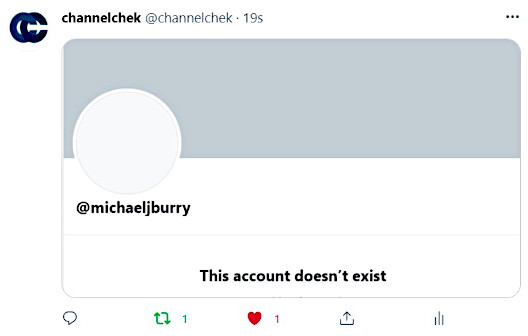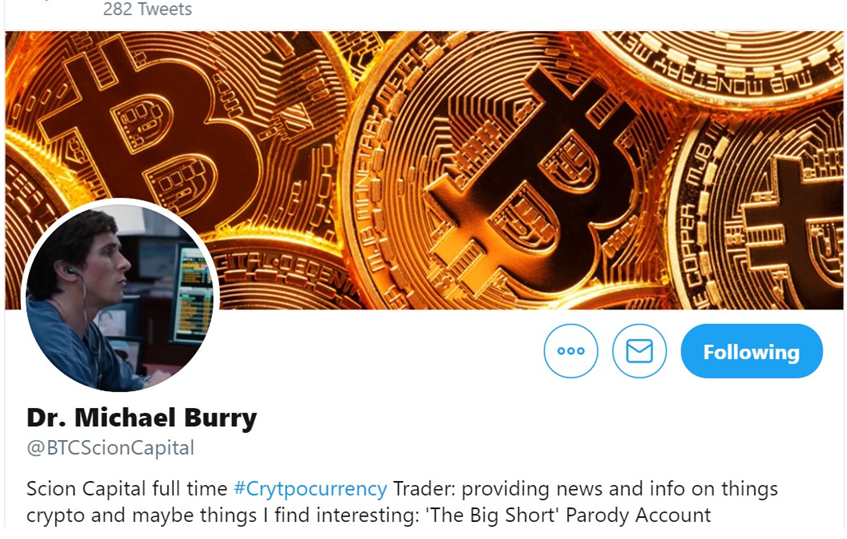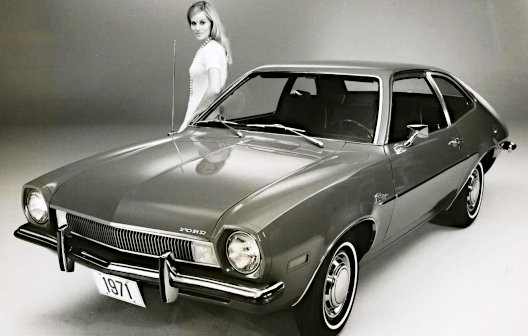Image Credit: Vladamir Agofonkin (flickr)
Can Stock Market Index Enthusiasm Cause Costly Bubbles?
It has been 23 months since Michael Burry again caught the attention of the investment world by saying index funds are in a bubble. The discussion resurfaced again this morning in Barron’s article titled, The
Stock Market is Ridiculously Expensive, the Average Stock Isn’t. As we approach the two-year anniversary of his Bloomberg email interview, it’s important to remember what we learned from Michael Lewis’ book The Big Short about Burry and what investors in his Scion Asset Management service sign off on before they invest with him.
The first can be summed up in this way. When Burry was figuring out how to play the other side of a real estate bubble that few saw as clearly as himself, he went all in and then waited. His positions were built over a long period of time without drawing excessive attention to what he was doing. He informed his readers through his newsletter what he thought; however, unlike many other investment newsletters, it was not written in an alarmist fashion. The trades took a long time to play out.
The second useful tidbit we learned from The Big Short story is investors grew tired of waiting and were quite concerned he may be wrong. Some even got out of their agreements. Burry, along with a few others who shorted mezzanine level CMO tranches and CDOs, had confidence that the upward trend in housing wasn’t sustainable and would one day crumble.
Burry and others shorting securities tied to housing scrambled to grow their positions because they were concerned others would see what was plain as day to them. They wanted to first fully load the boat with shorts on assets that appeared doomed.
What he Told Bloomberg
On September 4, 2019, Bloomberg News posted an article from a lengthy interview with Burry, whom many consider a savant investor. His view was startling at the time; he believed that the flood of money into index funds shows parallels with the pre-2008 bubble in collateralized debt obligations. Not one to just trade on hunches, Burry backed up what he said, saying index fund inflows are now distorting prices for stocks and bonds in much the same way that CDO purchases did for subprime mortgages. He warned the flows would reverse at some point and mentioned “it will be ugly” when they do.
Burry explained, “Like most bubbles, the longer it goes on, the worse the crash will be,” At the time he liked small-cap value stocks, one of the reasons is they tend to be under-represented in passive funds. His concerns included a lack of price discovery mechanisms functioning naturally, “Central banks and Basel III have more or less removed price discovery from the credit markets, meaning risk does not have an accurate pricing mechanism in interest rates anymore. And now passive investing has removed price discovery from the equity markets. The simple theses and the models that get people into sectors, factors, indexes, or ETFs and mutual funds mimicking those strategies — these do not require the security-level analysis that is required for true price discovery.
“This is very much like the bubble in synthetic asset-backed CDOs before the Great Financial Crisis in that price-setting in that market was not done by fundamental security-level analysis, but by massive capital flows based on Nobel-approved models of risk that proved to be untrue.”
|
“…In the Russell 2000 Index, for instance, the vast majority of stocks are lower volume, lower value-traded stocks. Today I counted 1,049 stocks that traded less than $5 million in value during the day. That is over half, and almost half of those — 456 stocks — traded less than $1 million during the day. Yet through indexation and passive investing, hundreds of billions are linked to stocks like this…” M.B. |
Burry’s take on liquidity risk is also hard to poke holes in; he felt many stocks have been on a free ride saying, without building a large following on their own. He said “The dirty secret of passive index funds — whether open-end, closed-end or ETF — is the distribution of daily dollar value traded among the securities within the indexes they mimic. In the Russell 2000 Index, for instance, the vast majority of stocks are lower volume, lower value-traded stocks. Today I counted 1,049 stocks that traded less than $5 million in value during the day. That is over half, and almost half of those — 456 stocks — traded less than $1 million during the day. Yet through indexation and passive investing, hundreds of billions are linked to stocks like this. The S&P 500 is no different — the index contains the world’s largest stocks, but still, 266 stocks — over half — traded under $150 million today. That sounds like a lot, but trillions of dollars in assets globally are indexed to these stocks. The theater keeps getting more crowded, but the exit door is the same as it always was. All this gets worse as you get into even less liquid equity and bond markets globally.”
|
“…That sounds like a lot, but trillions of dollars in assets globally are indexed to these stocks. The theater keeps getting more crowded, but the exit door is the same as it always was. All this gets worse as you get into even less liquid equity and bond markets globally…” M.B. |
Although he didn’t give a time frame in late 2019, he said it wouldn’t end well. He discussed how advisors are helping to build the problem by placing clients in indexed funds rather than more active management and lowering their fees to attract more assets; this helps the problem snowball. “Potentially making it worse will be the impossibility of unwinding the derivatives and naked buy/sell strategies used to help so many of these funds pseudo-match flows and prices each and every day. This fundamental concept is the same one that resulted in the market meltdowns in 2008. However, I just don’t know what the timeline will be. Like most bubbles, the longer it goes on, the worse the crash will be.” Said, Dr. Burry
Although it seemed surprising and even unbelievable at the time when the unraveling in the mortgage market began 13 years ago, it quickly became obvious that the market was allowed to become over-inflated (pronounced bubble) because the normal pricing mechanisms were stifled. Other investors eventually saw what Burry had seen much sooner; by then it was too late.
In an article this morning (July 28) in Barron’s, it seems they are beginning to make the same arguments that Michael Burry made almost two years ago. The Barron’s piece is titled, The Stock Market is Ridiculously Expensive, the Average Stock Isn’t.
The Barron’s Article Take on Today’s Market
The overriding claim in the reporting by Jacob Sonenshine is the stock market as a whole might look expensive, but there is value to be found in most companies in the S&P 500 (S&P).
The reason given is the index weighs stocks with larger market caps greater than lower-valued companies. The S&P is currently trading at 21.4 times the aggregate forecast earnings per share of the companies that make it up. That, according to Barron’s is 43% above the long-term average of 15 times. If the influence of market cap was removed and all stocks were weighted equally, the average valuation would be 19 times forecasted earnings, according to Morgan Stanley, this is down from the high this year of 21 times. The decline resulted from sectors like energy selling off.
Investors are concerned that companies like Facebook, Apple, Amazon, Netflix, Google, and Microsoft are why the standard market cap weighting of the S&P appears expensive. According to Barron’s article, the six companies, with a combined market value of $9.4 trillion, account for a quarter of the index’s aggregate value.
They have outperformed the index recently, with an average gain of 4.9% in the past month. The S&P 500 is up 2.6% over that time. The thinking presented in the article is that investors who are positive about the economy are likely to be able to find value by picking stocks that demonstrate value rather than subjecting themselves to the lack of diversification weighted heavily toward those that are overvalued by traditional measures.
Take-Away
Don’t grow impatient with convictions, but timing is difficult. There is no certainty as to whether index fund investing has run its course and created unsustainable bubbles. However, the arguments made almost two years ago by someone who amassed great wealth back in 2008, shorting CDOs, is now being adopted by more mainstream thinking.
When evaluating small-cap stocks, remember your Channelchek registration allows you access to research and data on 6000 prospects that may fit your portfolio.
Paul Hoffman
Managing Editor, Channelchek
Suggested Reading:
 Michael Burry Tweets Advice on Cryptocurrencies
|
 Michael Burry Says COVID-19 Cure Worse Than the Disease
|
 Why Microcaps are the New Small-Cap Stocks
|
 Index Funds May Still Fall Apart Over Time
|
Sources:
Stay up to date. Follow us:

|
